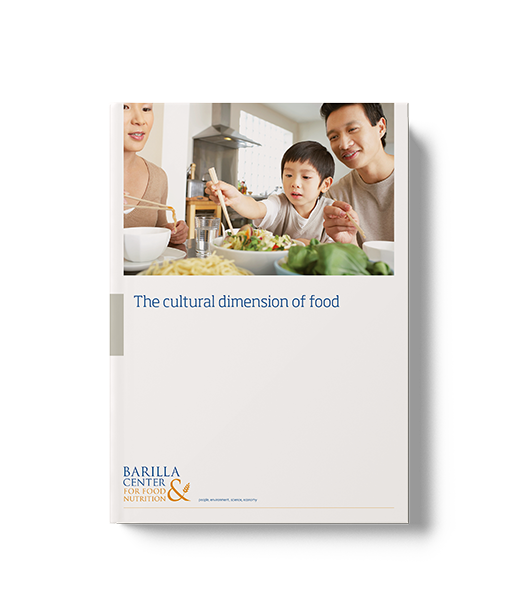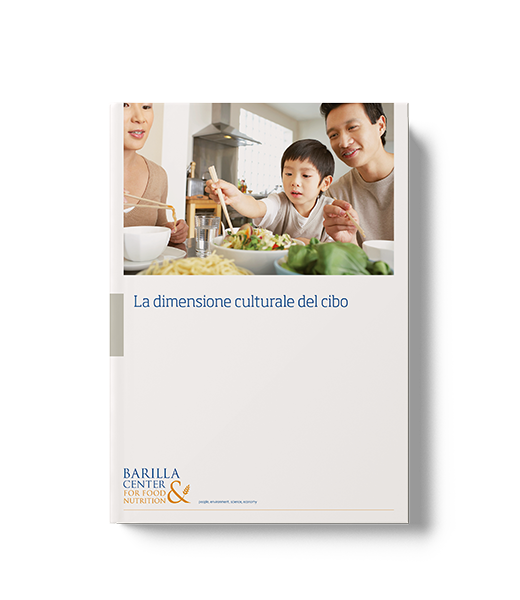
Barilla Center for Food & Nutrition
The cultural dimension of food
Barilla Center for Food & Nutrition
The relationship between humans and food has a vibrant history with profound social and cultural implications. From the discovery of fire – which, as Levi Strauss noted, “made humans human” – to the development of national culinary identities, which according to Rozin embody the dietary wisdom of their respective cultures, food has always been a true witness to an ongoing evolution across the globe.
Today, thanks to a food culture increasingly focused on the values of naturalness and sustainability in all its forms, it is possible to successfully address the major food-related challenges of our time – from food access issues to the prevention of a wide range of diseases, and environmental protection.
The cultural dimension of food, as explored by the Barilla Center for Food & Nutrition, concisely and effectively retraces the key moments in the reflection on the human-food relationship, focusing on the emerging elements that define our time and culture – such as the demand for functionality and authenticity in food, and the shaping of eating styles.
Executive summary
1. The cultural dimension of food
1.1 Food—marriage of nature and culture
1.2 Food as a stimulus to primordial communication
1.3 What is food and what isn’t: cultural classification of what is edible 1.4 Food, culture and social power
2. The food-culture relationship in the practice, spiritual and social life
2.1 Food in the world’s great religions
2.1.1 Food, knowledge and sin
2.1.2 Food sharing and congregation of the faithful
2.1.3 Dietary prohibition: food and purity
2.2 The world’s great culinary traditions
2.2.1 Mediterranean cuisine
2.2.2 Oriental cuisine
2.2.3 Anglo-Saxon cuisine
2.2.4 Dietary crossovers
2.3 Diet and social rituals
2.3.1 Food as a shared pleasure
2.3.2 Table rituals
2.3.3 The competence and cuisine knowledge to strenght social identity
2.4 Recent history of man’s relationship with food
2.4.1 From the post-war period to the 1970s: birth of the modern food industry
2.4.2 ‘80s-‘90s: globalization, fast hedonism and slow philosophy
2.4.3 Today: the shopping trolley full of… wealth or threats
2.5 The impoverishment of the food-culture relationship
2.5.1 Cooking, the table and food: the how, where and what of eating
2.5.2 Food as experience
3. The influence of social cultural trend on contemporary nutrition
3.1 The omnivore’s dilemma in today’s world
3.1.1 Past dietary traditions: good to eat and good to think
3.2 Rediscovery of naturality
3.2.1 Orientation to authenticity
3.2.2 The vegetarian approach
3.2.3 Food, environment and sustainability
3.2.4 New responsibilities for industry
3.2.5 Food advertising: myth-making, brands and manipulation
3.2.6 For a new vision: going back to the central dimension of food, redefining the pleasure and spread knowledge of food
4. Conclusion
Bibliography
Il Barilla Center for Food & Nutrition (BCFN) è un think tank multidisciplinare fondato nel 2009 all’interno della Fondazione Barilla e trasformato in fondazione autonoma nel 2014, con l’obiettivo di raccogliere e analizzare conoscenze sulla filiera alimentare per proporre soluzioni sostenibili e salutari. Con sede a Parma e finanziato dal Gruppo Barilla, riunisce esperti in nutrizione, economia, scienze ambientali e sociologia per studiare le dinamiche di produzione, consumo e spreco alimentare.
Organizza eventi internazionali, tra cui il BCFN Forum, workshop e webinar, coinvolgendo istituzioni, università e ONG in partnership strategiche. Offre programmi di formazione e comunicazione, webinar e risorse online per sensibilizzare consumatori e operatori del settore sulle sfide nutrizionali e ambientali. Grazie a collaborazioni con FAO, IFAD e altre agenzie internazionali, il BCFN contribuisce a definire linee guida e policy per una dieta sana, equa e rispettosa del pianeta.
